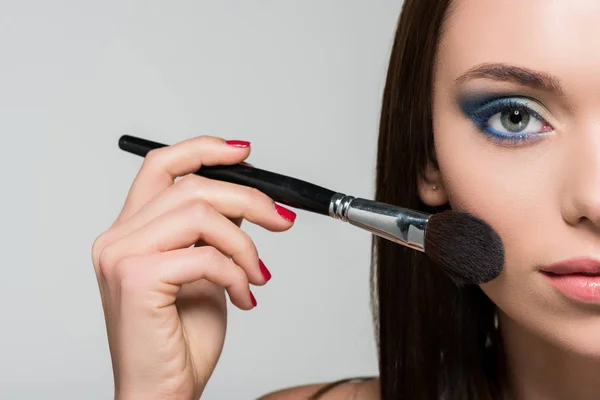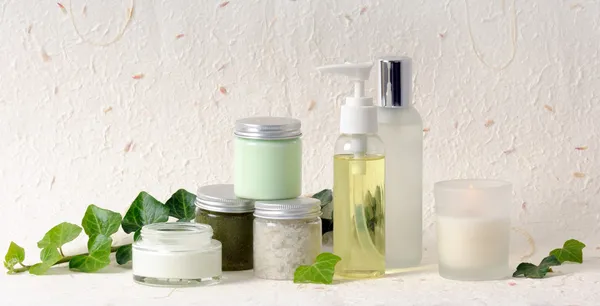Upcycled Cosmetic Ingredients Market Expected to Reach $433.5 Million by 2031
According to a new report published by Allied Market Research, titled, “Upcycled Cosmetic Ingredients Market”, The upcycled cosmetic ingredients market size was valued at $231.48 million in 2021, and is estimated to reach $433.5 million by 2031, growing at a CAGR of 6.6% from 2022 to 2031.
In 2021, the skin care upcycled cosmetic ingredients segment accounted for the majority of the total upcycled cosmetic ingredients industry. Upcycled cosmetics are made from previously discarded plant-based waste to create new cosmetic components. Traditional ingredient lists, which are frequently harmful to humans and the environment, can be replaced with upcycled cosmetic ingredients.
Food crops are a top priority because climate change is putting additional strain on available agricultural land around the world. The United Nations estimates that by 2050, the world may need to produce 50% more food than it did in 2010 to feed its expected 9.3 billion people. Nearly one-third of the food produced in the U.S. for human consumption is wasted. Food waste misuses the resources used in its production, processing, transportation, preparation, and storage.
Food loss and waste exacerbate the climate change dilemma by producing large amounts of greenhouse gas (GHG). It accounts for about 6% of human-caused greenhouse gas emissions, according to the U.S. Environmental Protection Agency. Food waste reduction and elimination can improve economic efficiency, productivity, and climate change mitigation. It can also address resource and energy conservation while reducing supply chain shocks caused by climate change. Food waste can be used in a variety of industries to become an important ingredient.

In the cosmetic industry, for example, tomato, grape, or olive seed debris is used as cosmetic components to keep organic waste from decomposing in landfills and emitting greenhouse gases that contribute to climate change. As a result of the increase in pressure to reduce food waste and the effective use of food waste as a raw material in the cosmetic industry to reduce the environmental impact increasing the upcycled cosmetic ingredients market demand during the forecast period.
There is an increase in food waste being repurposed as basic ingredients in the cosmetics industry. The coronavirus pandemic has disrupted supply networks for cosmetic chemicals, providing additional impetus to the organization. According to AMR analysis, as the cosmetics industry develops goods for a circular economy and shifts to regional supply chains for raw ingredients, the adoption rate of upcycled ingredients is projected to rise.
Food by-products, also known as food side streams, are already recognized as a natural component source. Many cosmetic and personal care products contain certain ingredients, such as palm kernel oil. Consumer demand for natural and organic personal care products has increased the demand for such raw materials. Other important upcycled cosmetic ingredients market trends are sustainability and preference for natural ingredients, with cosmetic and ingredient companies promising to incorporate more plant-based and natural ingredients into their cosmetic formulations.
Research and Sustainability
The demand for new crops of botanicals used as cosmetic ingredients, as well as the costs associated with their production, processing, and packaging, can be reduced by using by-products. Monocultures used in the cosmetics industry can be resource-intensive and harmful to biodiversity. Producing rose essential oils, for example, may be considered unsustainable because it takes 5 tons of rose petals to produce 1 kilogram of oil. Although the process of upcycling ingredients requires the use of energy, water, and other resources, it can be done in a sustainable manner.

Extensive research is usually carried out to trace their origins and the morality of their production from farm to the supplier before purchasing upcycled ingredients. As a result, unsustainable methods of obtaining the ingredient may hamper the upcycled cosmetic ingredients market growth. There is an increase in repurposing food waste as basic ingredients within the cosmetics business. The coronavirus pandemic has disrupted supply networks for cosmetic chemicals, giving the organization further momentum.
According to AMR analysis, adoption rate of upcycled ingredients will increase as the cosmetics industry develops goods for a circular economy and switches to regional supply chains for its raw ingredients.
Food by-products, sometimes known as food side streams, are already recognized as a source of natural components. Many cosmetic and personal care products use certain substances, such as palm kernel oil. The increased consumer desire for natural and organic personal care products has increased the need for such raw materials. Another important factor is sustainability, with cosmetic and ingredient companies promising to use more plant-based and natural ingredients in their cosmetic formulations.
The upcycled cosmetic ingredients market analysis is done on the basis of application and region.
On the basis of application, the upcycled cosmetics ingredient are classified into skin care, hair care, and color cosmetics. On the basis of region, the market is divided across North America (the U.S., Canada, and Mexico), Europe (UK, Germany, France, Italy, Spain, Rest of Europe), Asia-Pacific (China, Japan, India, South Korea, Australia, and rest of Asia-Pacific), and LAMEA (Brazil, South Africa, and Rest of LAMEA).

Skin care application garners the largest upcycled cosmetic ingredients market share and is predicted to have a steady growth with a CAGR of 6.2% during the forecast period as it is the most commonly used type of upcycled cosmetic ingredients. North America was the largest shareholder in terms of upcycled cosmetic ingredient sales in the base year owing to the massive demand for organic and vegan ingredients in the region. Europe was the second largest in terms of market share, while the LAMEA region is expected to have the highest growth rates with CAGR of 7.44% at the end of the forecast period.
Key findings of the study
On the basis of application, the skin care segment dominated the market in 2021 and is likely to remain dominant during the forecast period. On the basis of region, North America was the highest revenue contributor accounting for 45.20% market share and is estimated to grow at a CAGR of 6.20%. The players operating in the upcycled cosmetic ingredients market have adopted various developmental strategies to increase their Givaudan, Symrise, Cargill, OLVEA, Mibelle Biochemistry, P2 Science, Inc., Rahn AG, Hair O’right International Corporation, Lignopure, and SOPHIM IBERIA S.L.





